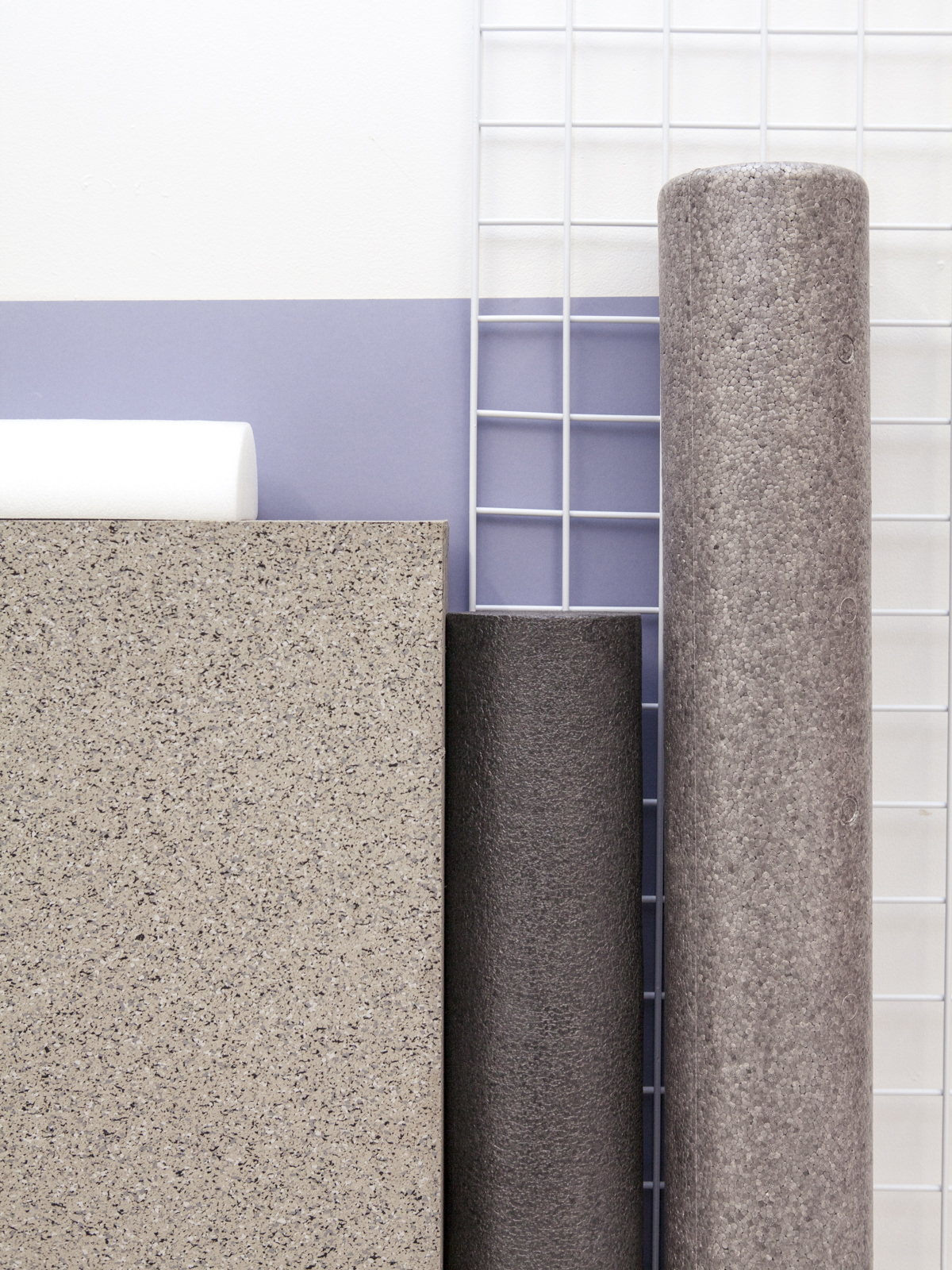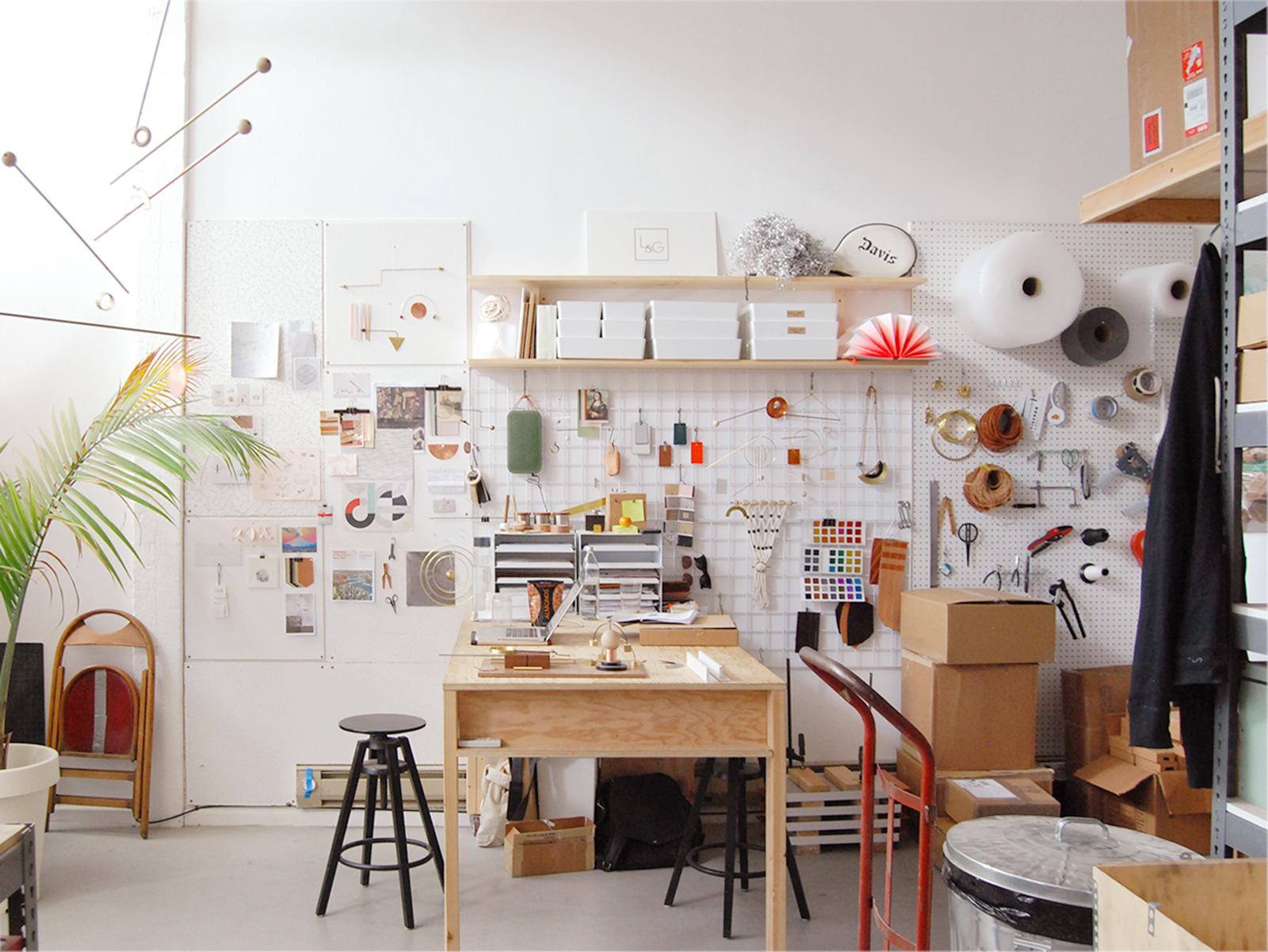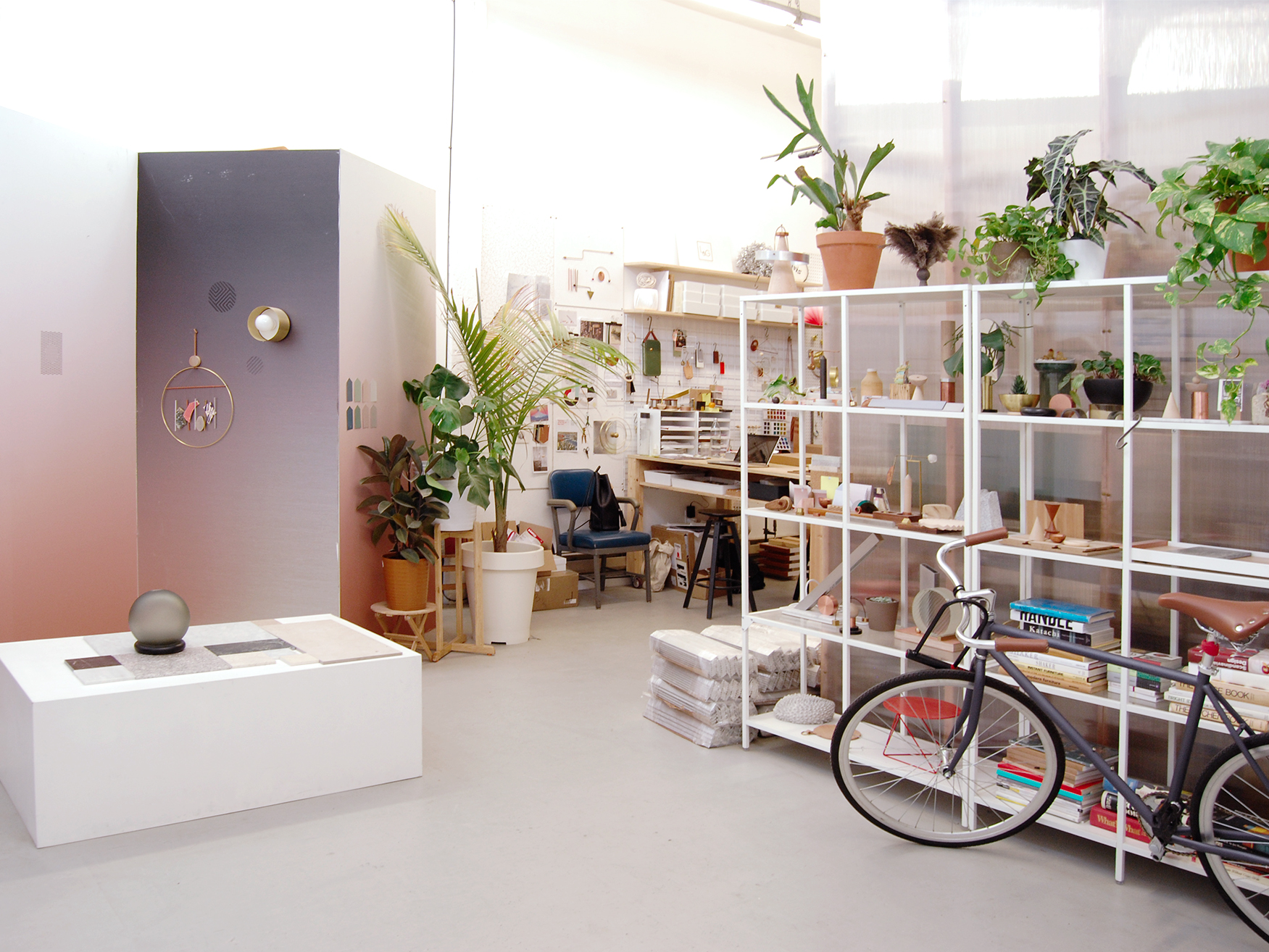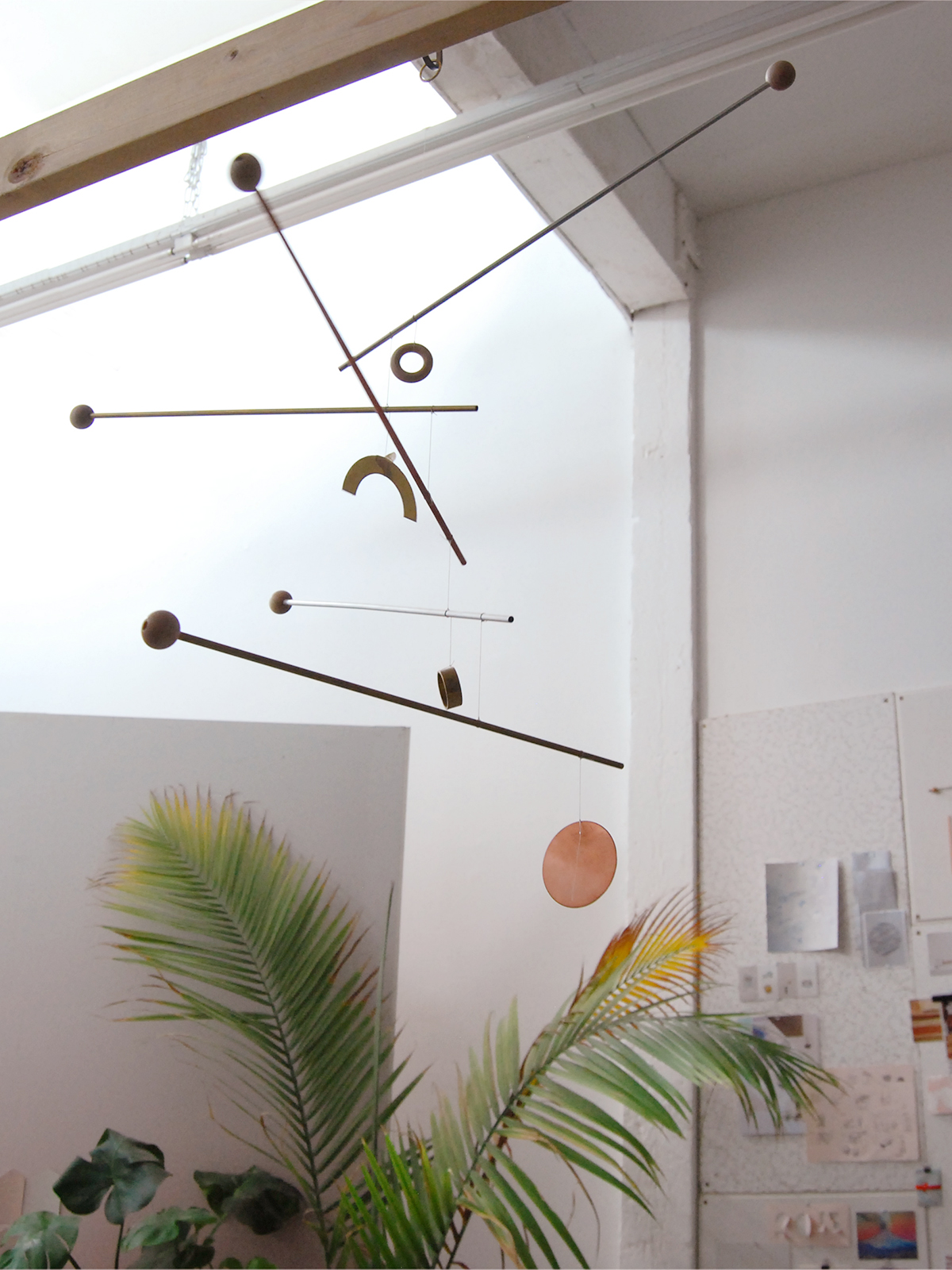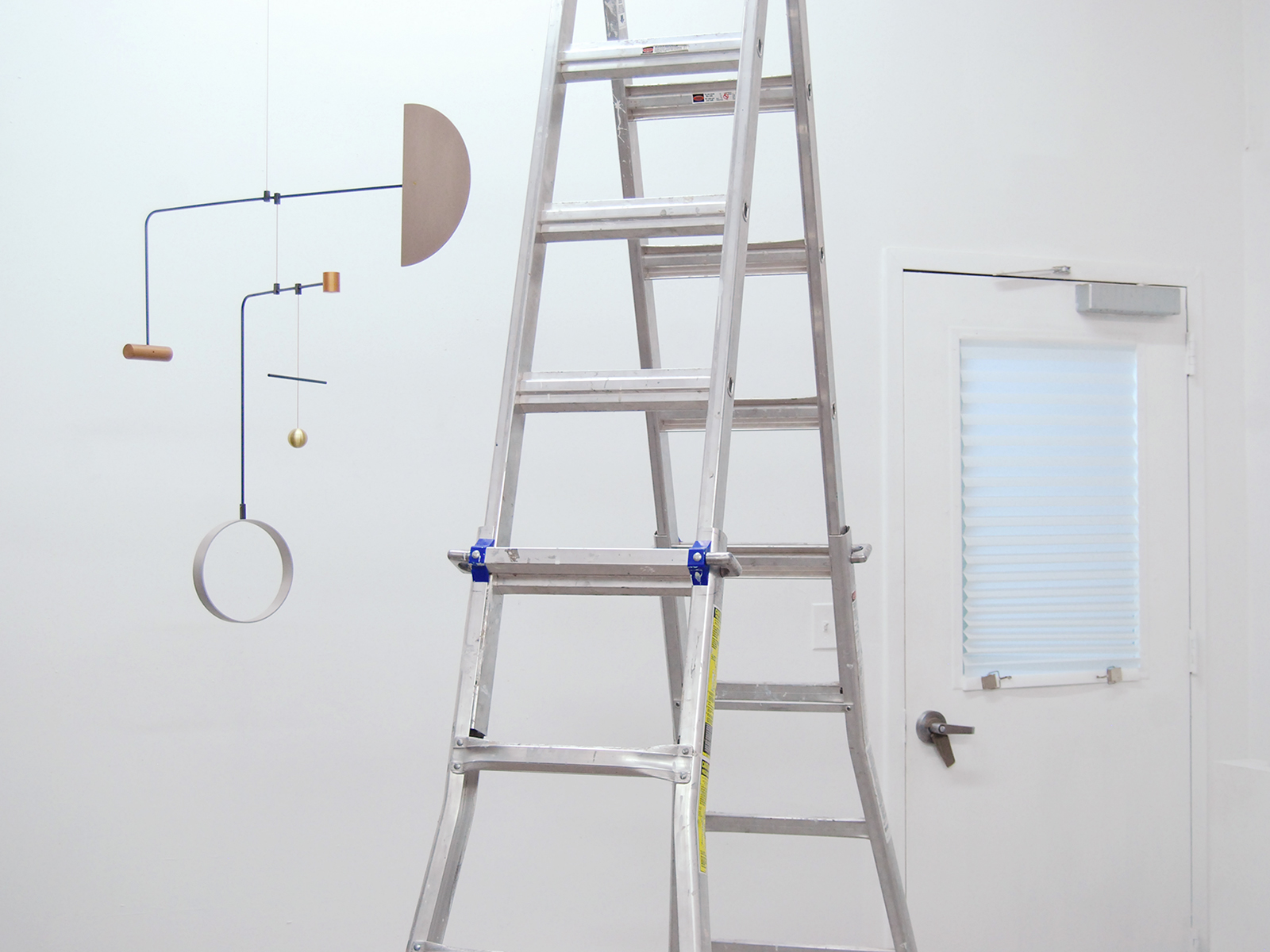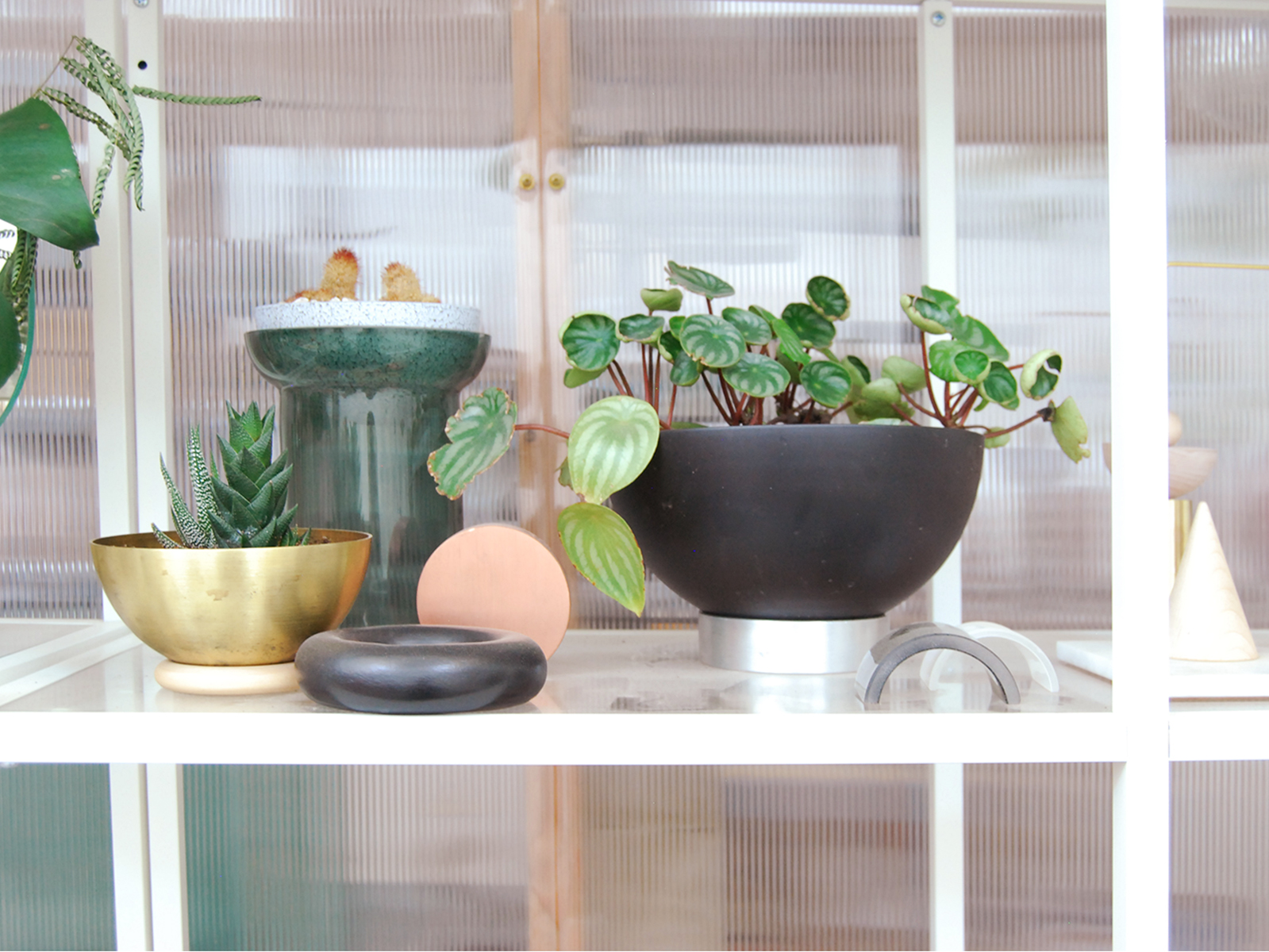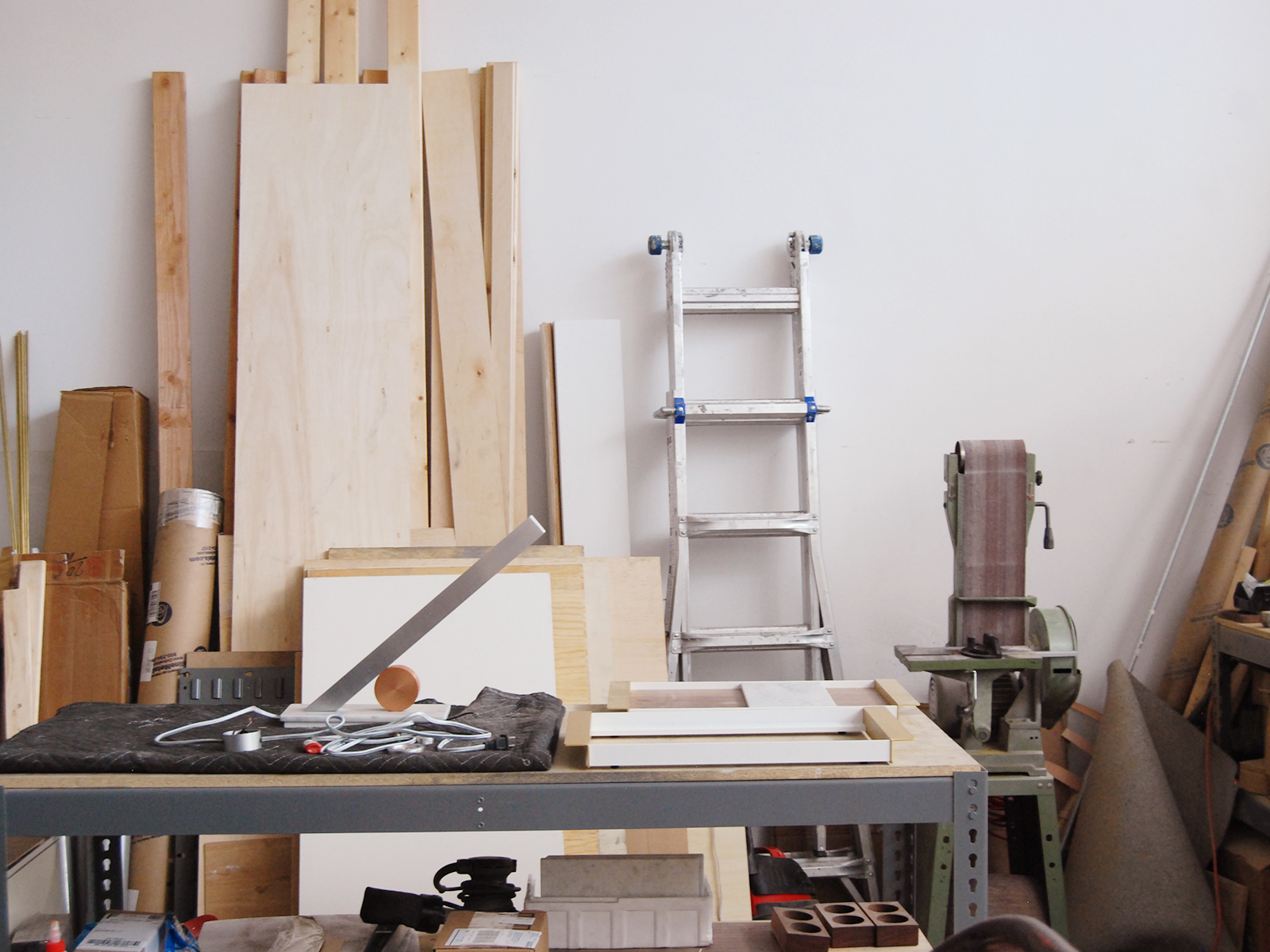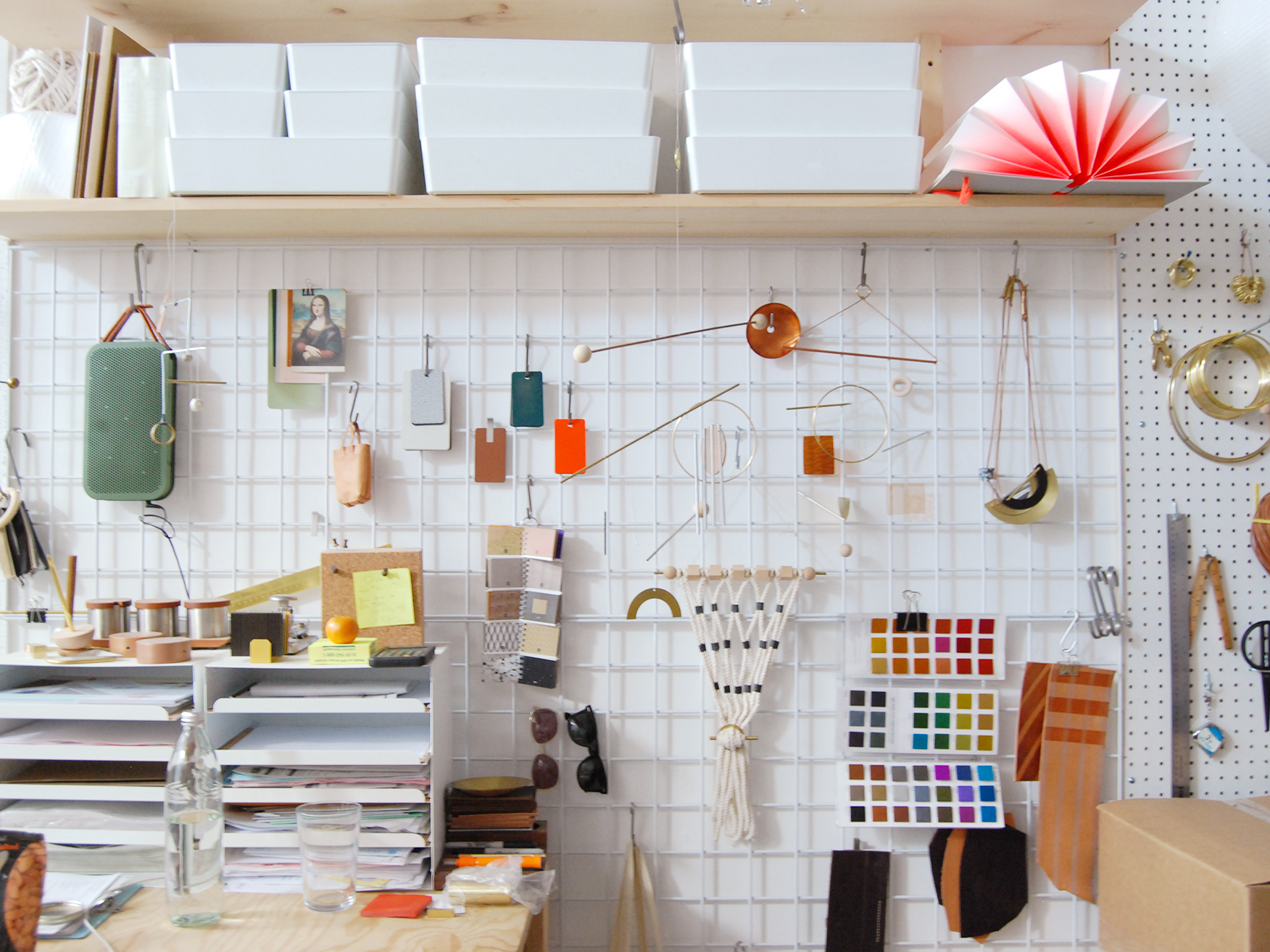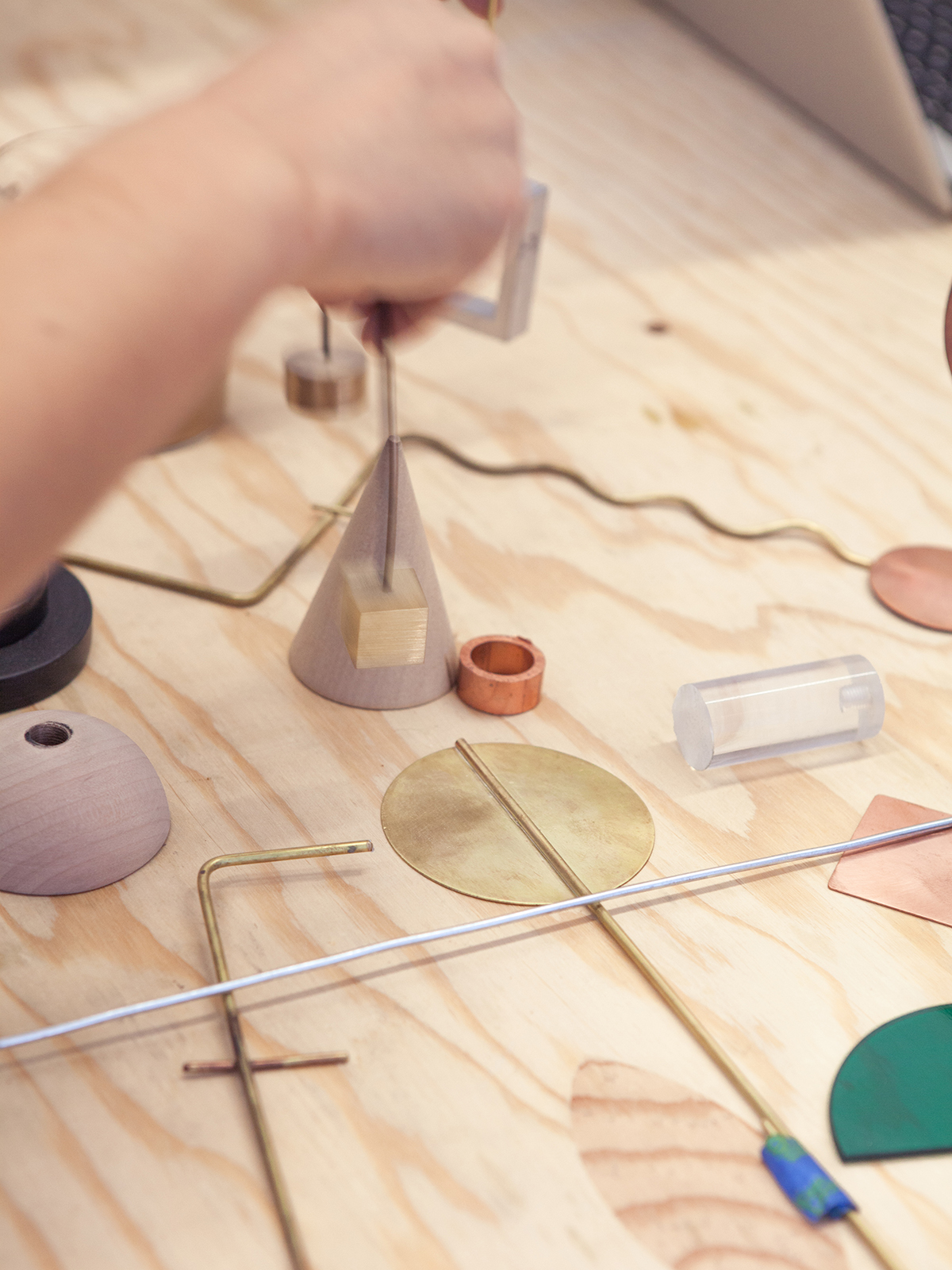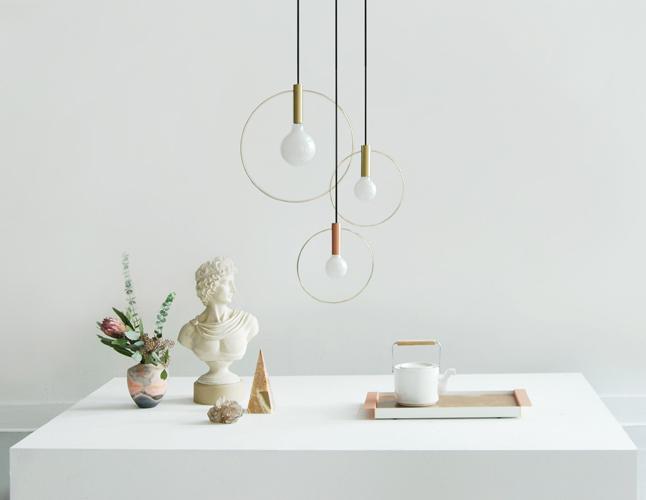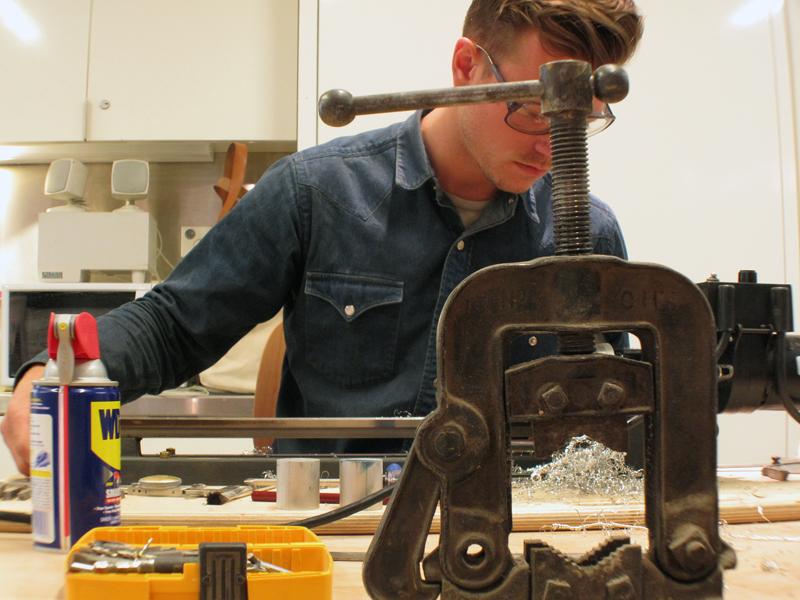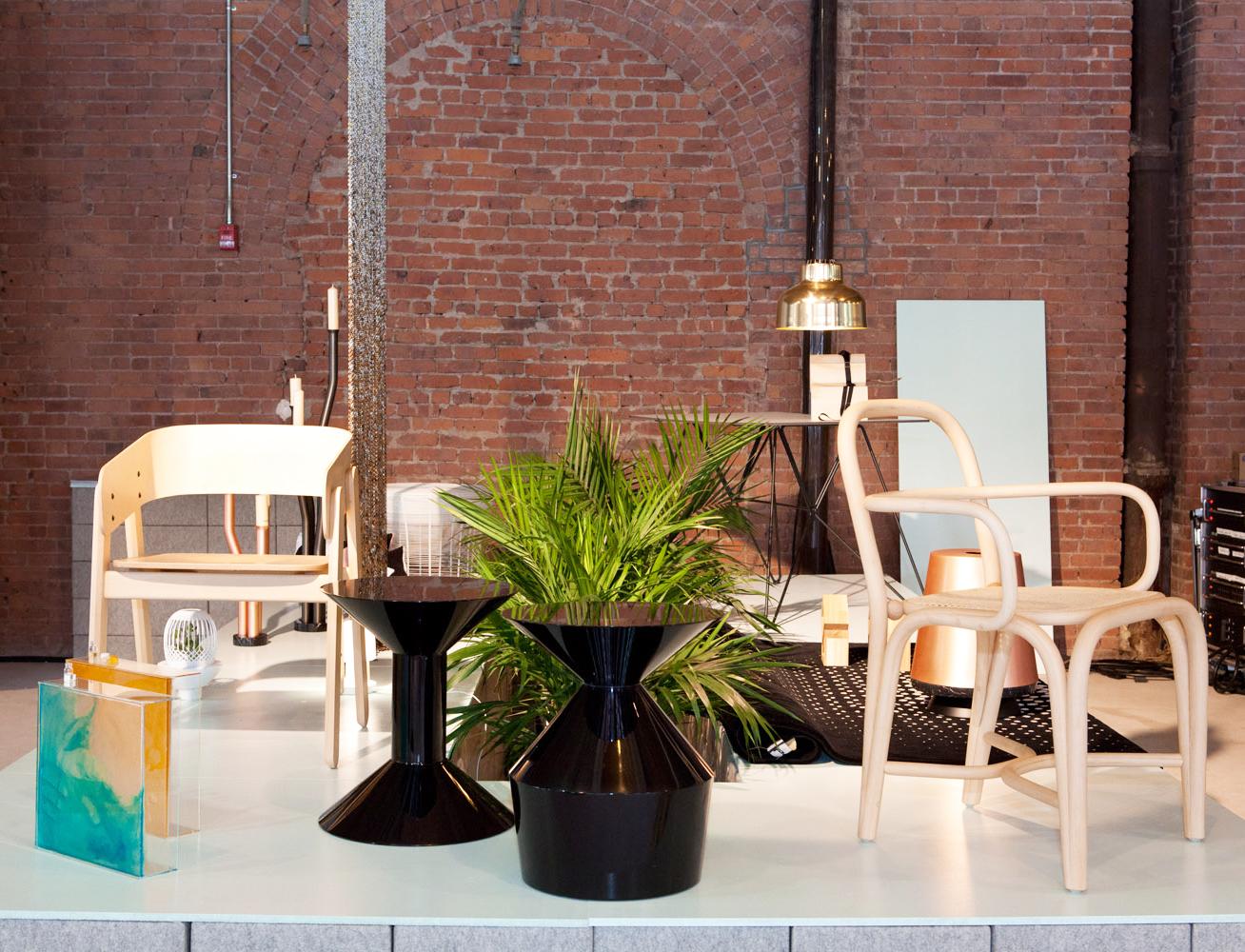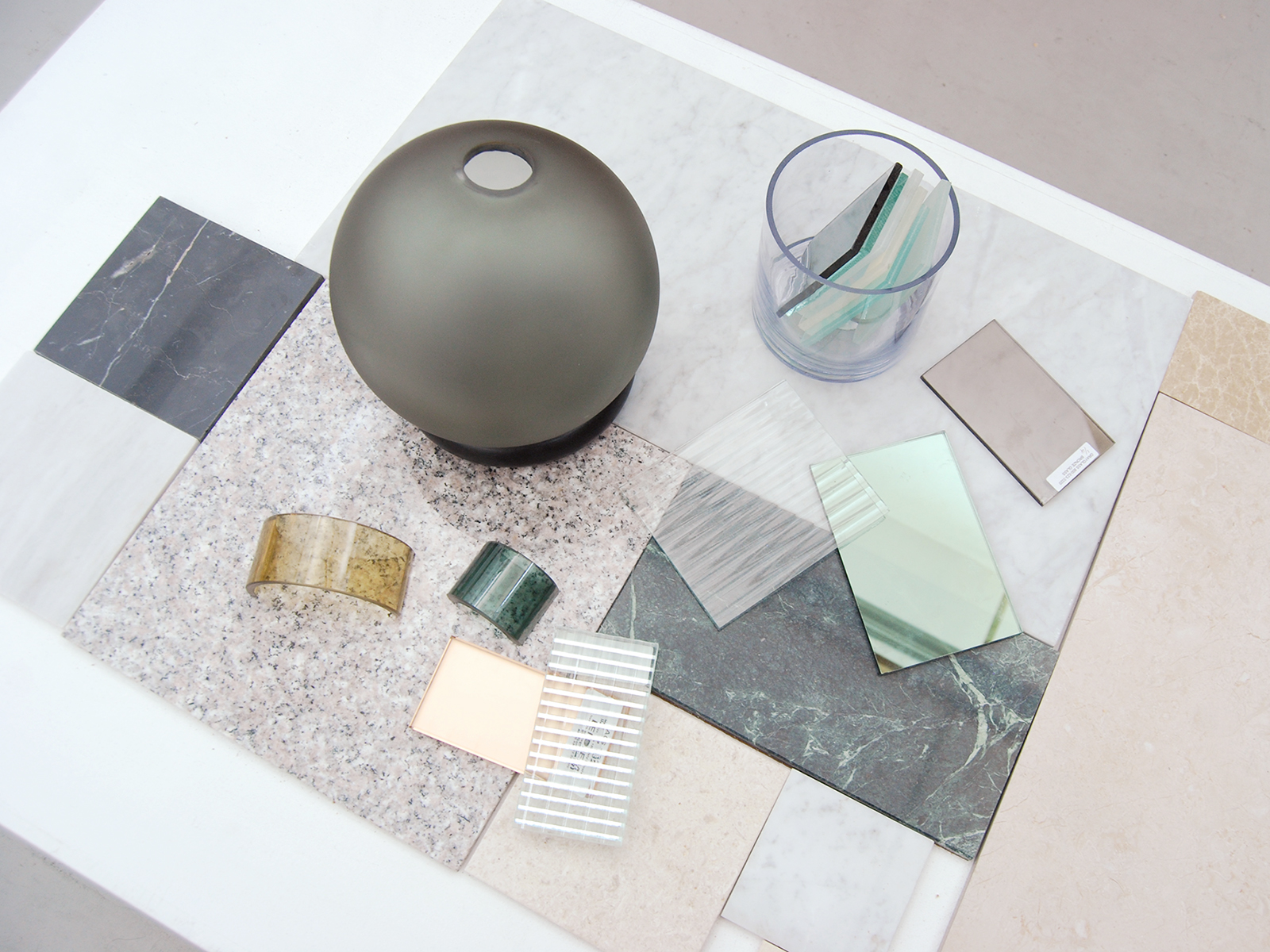
02.10.16
Studio Visit
Playing Around With the Cool Kids of American Design
Before the stained-glass wind chimes and the suspended leather chairs, the metal mobiles and the mirrored mirage shelves, Jean Lee and Dylan Davis of Ladies & Gentlemen Studio were students of industrial design at the University of Washington, occupied with materials of a humbler sort. “The first thing we designed together was a planter made out of recycled newspaper pulp and plaster,” Davis says. “The project was about renewal, but it was also about creating a good product that could be made in multiple and potentially sold. We didn’t know it then, but that experience was a precursor to how we would eventually work together and how our two aesthetics and sensibilities would merge.”
Since then, the collaboration has evolved into a full-blown, full-time, operation. (No stranger to Sight Unseen, they’ve been featured on more than one occasion, including as up-and-coming designers based in Seattle in 2012). Now, just over three years later, the company is officially bi-coastal, having relocated from the Pacific Northwest to a brand-new Brooklyn studio last May. Its eclectic catalog continues to grow, encompassing all manner of thoughtfully-constructed curiosities.
“All of our work is an evolution of itself,” Davis says. Shapes on a piece of jewelry might lead to a geometric take on lighting; that, in turn, might inspire the assorted forms suspended on a mobile. However distinct, each piece is unmistakably linked to the next, joined by an understated elegance and what Lee and Davis refer to as “playful austerity.” “We try to embrace that feeling you had as a kid when you got to really explore,” Davis says. “Our goal is to take that spirit of play and figure out how to use it professionally.”
PHOTOS BY ROBIN STEIN AND LADIES & GENTLEMEN STUDIO
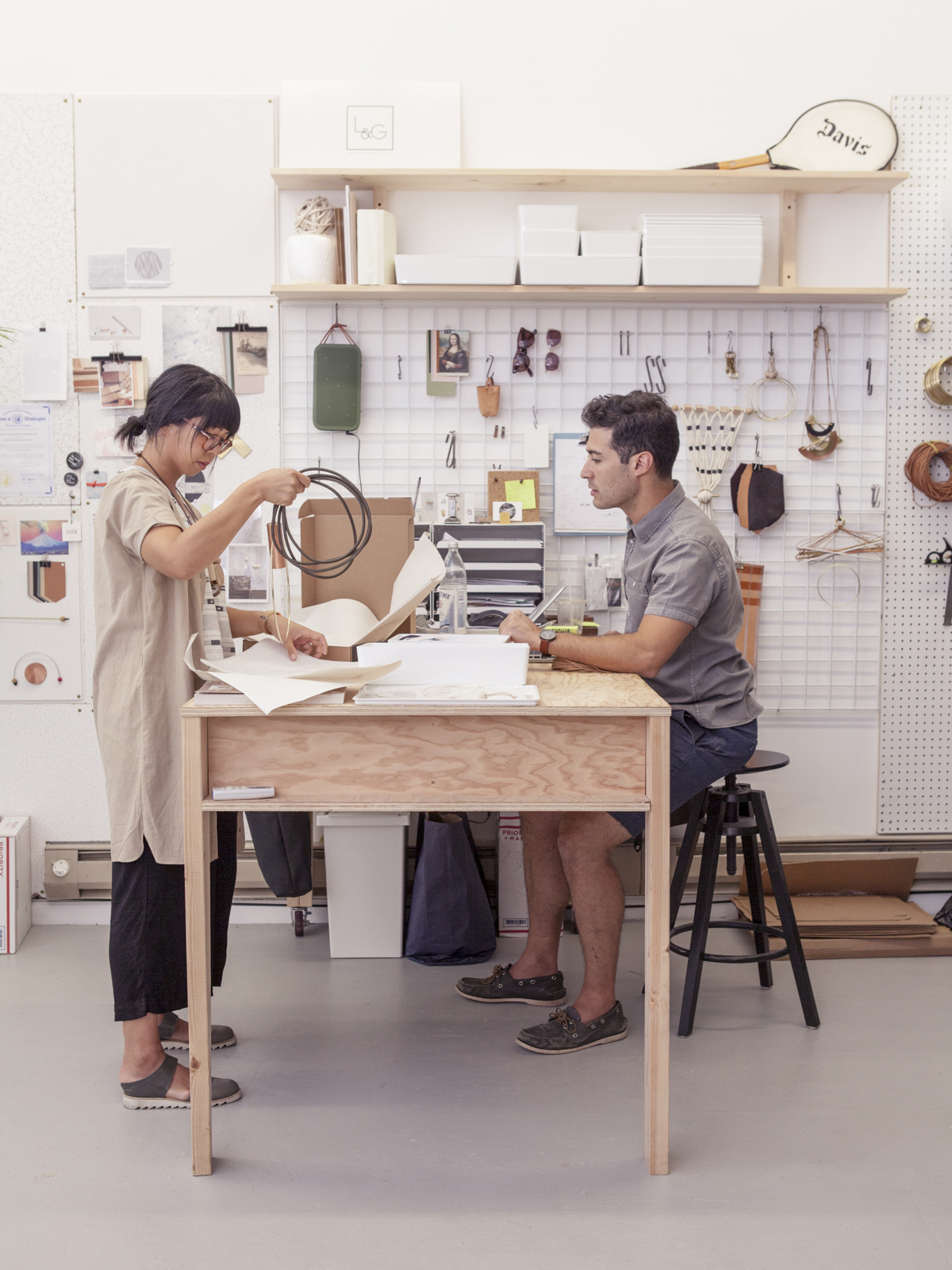
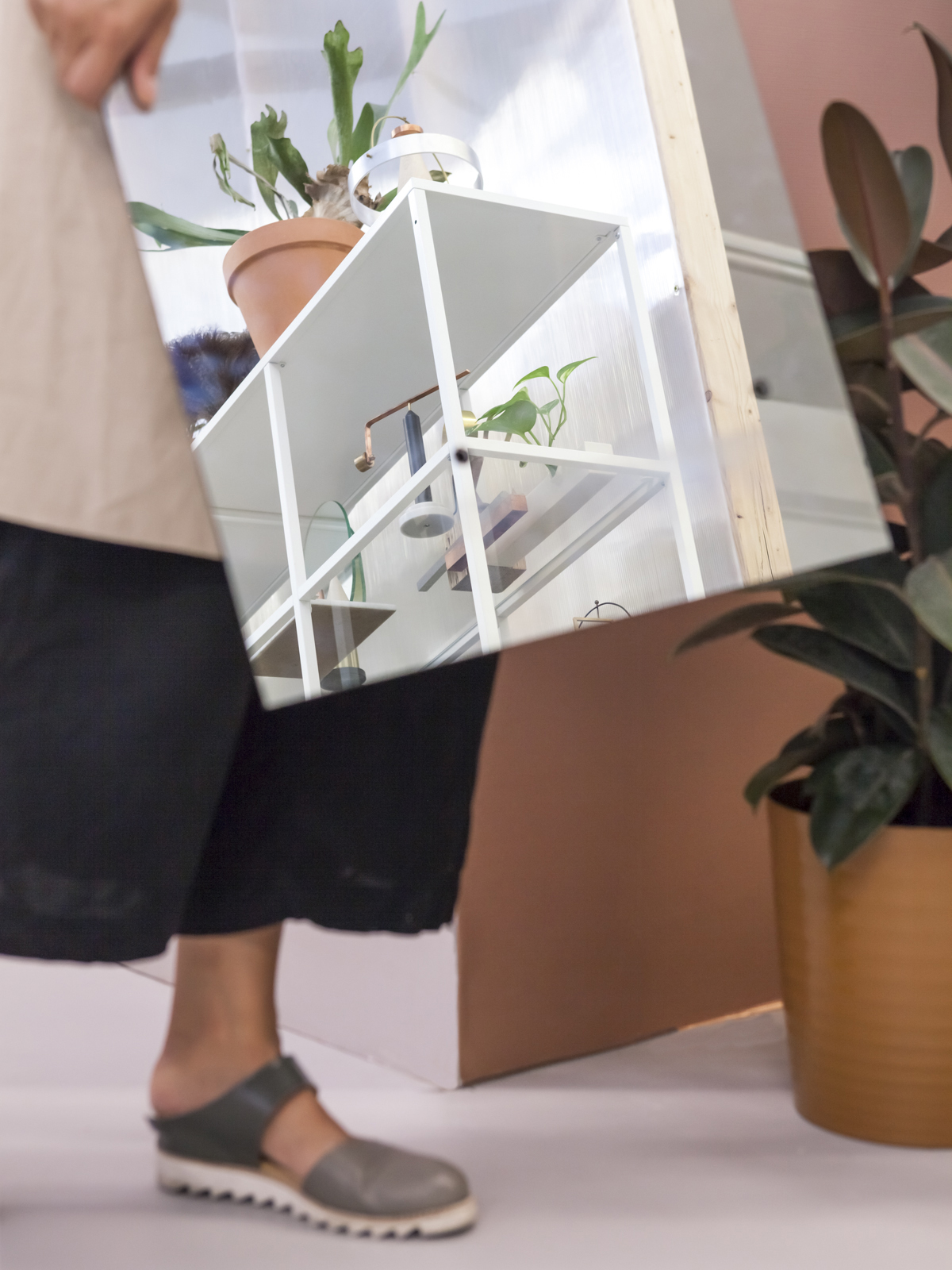
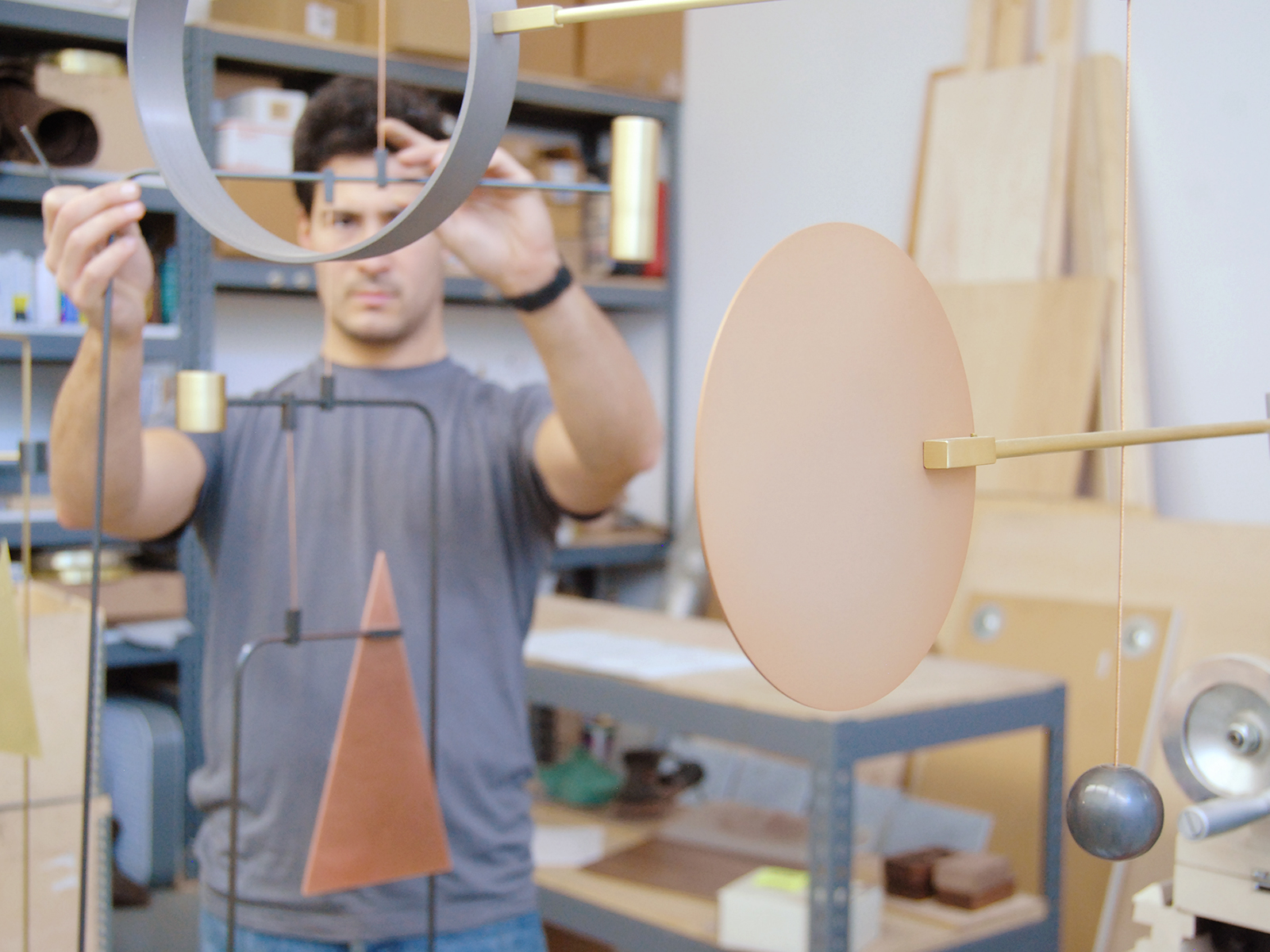
Let’s talk more about your love of play. Why is an experimental approach to design an important part of your creative process?
Lee: We try to keep an element of play alive in both our work and our design process. We’re both hands-on people who enjoy the process of playing with physical materials to come up with an idea. It’s similar to how kids work with building blocks. I like to joke and say that we’re “professional kids.” We take the idea of play very seriously.
Davis: We’ve committed to making that a core value both personally and professionally. It’s the reason we started our studio in the first place — so that we could really be creative and expressive in our work, and have that practice become part of what we do daily. It can be challenging at times when you’re also trying to make a business out of it, but this is all a part of a grand experiment to see if we can create a unique business that works for us. It’s the real reason we’re doing this.
Last spring, you made the move from Seattle to New York City. What prompted that change?
Davis: We met in Washington as students and had always talked about moving someplace new. But after school, we both got jobs in Seattle and ended up staying there. It was all very comfortable. We were both working as designers, we bought a house — things were good. But at a certain point, we realized we wanted to explore a little more before we really settled down. We still had a desire to travel, and we wanted to challenge ourselves.
Lee: We considered Europe as an option. But we chose New York because we felt it was a good in-between. The culture, pace, and the environment are very different from Seattle, and we could still manage our studio and operate our business without too much shake-up. Now, looking back, we feel like we’re in the right place. It’s been incredibly inspiring and challenging in the best ways possible.
In what ways do you think the change of scenery has affected your work?
Davis: A big difference between Seattle and New York is density on multiple levels. Not only are there more people in much more confined areas, there’s also more history, more layers to the architecture, more culture. There’s just more happening. In Seattle, on the other hand — and this is a good thing — there’s a vastness to the environment allowing more personal space to think and reflect, which means that often, people are more reserved, but also more thoughtful and deliberate.
Lee: The social dynamic and lifestyle between the West Coast and East Coast is completely different, but somehow we feel at home in both places. One big thing we noticed in New York is how people are very spontaneous and open to new ideas and collaborations. One of the first collaborative projects we did after moving here was with Calico Wallpaper to show at Sight Unseen OFFSITE last year. We loved their wallpaper so much that we kept the display in our studio and teamed with one of my favorite clothing brands, Kaarem to create a lookbook called Scales & Folds.
With L&G, we’ve always loved mixing and matching forms, materials, and ideas to create work that feels unexpected. We felt some familiarity, then, when we realized that the city itself is a essentially a living collage of building materials, cultures, people, ideas, history. Walking around, I take photos of colors, textures, and surfaces on the street and create what I like to call “visual stories” just for fun. I’m not sure how all of this will affect our work, but perhaps we’ll formulate new perspectives by merging all the things we love and find inspirational about both coasts.
Davis: Then there’s the physical landscape, too. In Seattle, we’d go on nature walks and collect random things like branches, rocks, plants. We’d put them on our shelves to admire them and see what ideas might creep into our work. Now that we’re in Brooklyn, we’re still doing that, but the things we’re finding — marble scraps, bricks — definitely reflect our new urban surroundings.
Tell us about your new studio. How did you come across this space in Red Hook, and what was important to you in its design?
Lee: It was all word-of-mouth. We found out about our studio through Calico Wallpaper — they have a space in the same building. Red Hook was our top pick. We love how quaint it feels, and there’s a great design community there. We jumped on it right away.
Davis: As for design: in Seattle, we ran our business out of our home. Slowly, as we grew, it overtook more and more of our apartment until eventually, the whole thing was dominated by our work. So we’re enjoying having a separation. It means that we can actually consider all of practical things that we believe make a good studio: natural light, shelving, storage, a nice white wall to photograph against. It’s nice to get away from that blurred line of living space and workspace.
2016 will be your first full year here. What’s in the cards thus far?
Lee: The next few months, we’ll be focusing on designing new pieces in collaboration with another studio, Vera & Kyte, from Norway. We’ll launch at Sight Unseen’s OFFSITE exhibit during New York Design Week this year. We’re excited about that, because it’s our first time collaborating with another design studio from abroad.
Davis: 2015 was all about changes. So much happened. We did the most exhibits we’ve ever done in a year, and we moved across the country. Not sure how we managed to pull it off, but we feel fortunate that everything worked out beyond our expectations. We want 2016 to be about refining what we’ve created and pushing ourselves to be more prolific and experimental. In general, we want to continue creating work that we value, that excites us and challenges us. That’s important. We hope to continue to expand, and move into other creative realms beyond designing physical objects.
In what ways do you hope to do that?
Davis: We’d like to expand our work beyond small objects. We’d like to design more abstract and sculptural work; perhaps spaces, too, or even experiences.
Lee: For example, last fall, we were invited to do a special creative retreat at Hancock Shaker Village, and to be a part of a design exhibit called Furnishing Utopia. We spent five days looking through the village’s archives as part of our study — it was so refreshing to see such beautifully made and thoughtfully designed objects from hundreds of years ago, and to ponder how their principles can relate to and inform our work today. That’s the type of experience we want more of.
Davis: We’ve also begun curating our own experiences, in a sense. We’ve started doing design field trips with some of our friends and likeminded creatives, where we’ll find places in New York or the surrounding area to visit for inspiration. We recently went to Flushing Meadows to see the 1964 World’s Fair grounds, for instance, and we visited the Judd Foundation, too. We’re just hoping to take advantage of what’s around us while we still have a new-kids-on-the-block mentality. It’s also a way for us to foster a sense of community here. It gives us a reason to get out. More than anything, we want to maintain an exploratory spirit.
